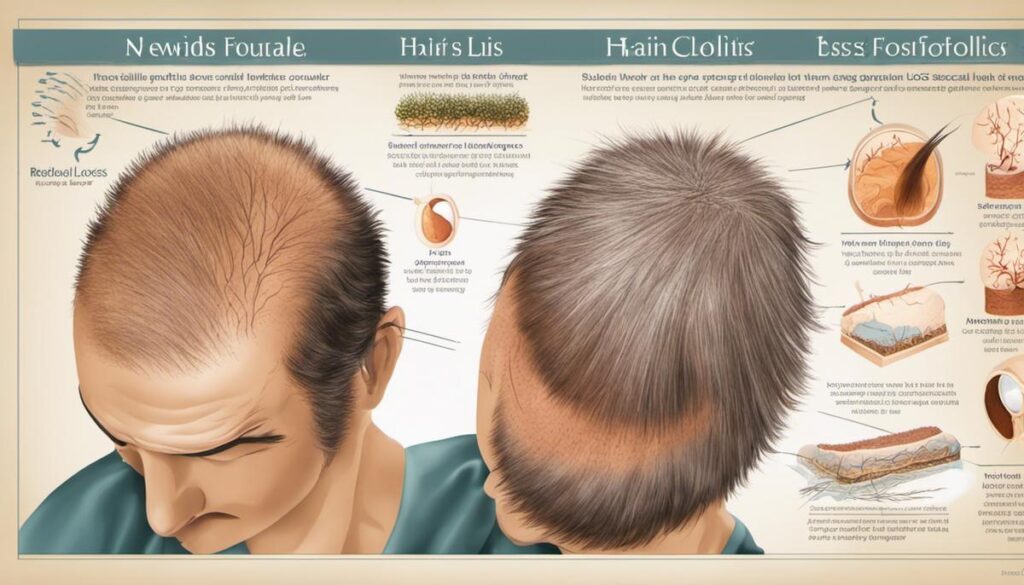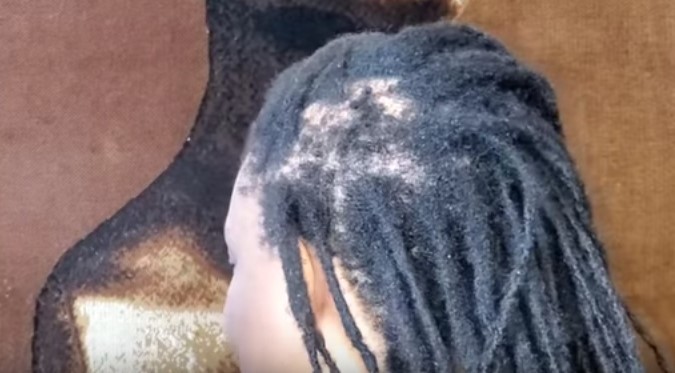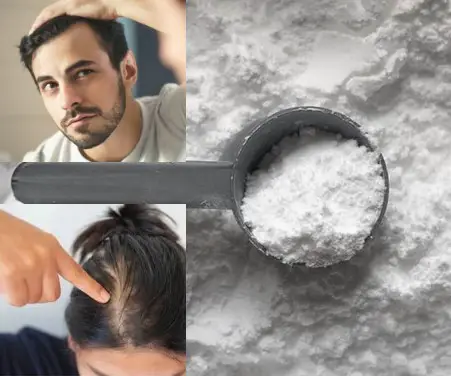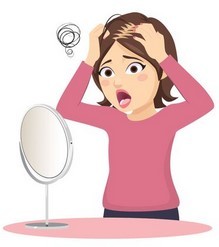Your Hair is Everywhere is a blog about understanding the causes of excessive shedding and solution to keep your hair under control,by using the best products for your hair type, we’ve got you covered!
Curiously, we are often surrounded by instances of hair strands that are not attached to their primary setting, the human scalp. While this is a natural, common occurrence, at times it could be an indicator of a comprehensive health predicament that needs attention. This discussion takes a broad look at hair loss while also addressing why is your hair is everywhere the peculiar phenomenon of finding hair in places other than our heads.
It goes beyond the mere perception of hair loss and hair shedding, providing a deep understanding of the biological cause and process it undergoes. Moreover, it does not only limit the discourse to conspicuous hair problems but also touches upon the humorous, slight-nuisance of finding hair strands dotted around your surroundings, on your clothes or furniture – breaking down the reasons from both biological and lifestyle perspectives. But fret not, this dialogue also revolves around effective strategies that can reduce hair loss and shedding and maintain cleanliness in your surroundings.
Understanding the Basics of Hair Growth
Hair has two main parts – the follicle in the skin and the shaft that you see. Follicles generate new cells for a while, then rest and start again. Each follicle follows its schedule at staggered intervals, so most people have some hair growth all the time. On the scalp, the average rate of hair growth is about one-half inch per month.
Your Hair Is Everywhere: Causes of Hair loss
We all shed some hair daily, but when it’s more than usual, it might be a concern. Normally, shedding around 50 to 100 hairs a day is considered normal. If you notice that you’re losing more hair than that, it could be a sign of something called excessive hair shedding or telogen effluvium in medical terms. This condition involves the body shedding a lot more hair than it typically would. Wondering what could be causing this? Or Does Hair Shedding Mean Hair Loss? Well, a few common culprits include:
Genetics and Hair Loss
Genetics play a significant role in hair loss. Some men and women inherit genes that make them more susceptible to a condition called androgenetic alopecia, or common baldness. The condition can start in the teens, twenties or thirties, with men generally losing hair on the front and top of the scalp and women generally thinning hair all over the scalp.
Hormone Imbalances and Hair Loss
Hormones can also contribute to hair loss. Certain hormonal imbalances like polycystic ovary syndrome (PCOS) can cause hair loss in women. Additionally, fluctuations in female hormones can lead to temporary hair shedding, which is often seen following childbirth, at menopause or with certain birth control medications.
Stress and Hair Loss
Stress is another common cause of temporary hair loss. Known as telogen effluvium, this type of hair loss happens when physical or emotional stress pushes hair follicles into a resting phase. As a result, hair might look thinner, and you might lose more hair when you brush or wash.
Understanding Hair Loss and Thinning
There are many medical and lifestyle factors that can potentially lead to hair thinning or hair loss. Health conditions such as thyroid problems and iron deficiency have been known to cause hair loss. Similarly, conditions that affect the scalp, including seborrheic dermatitis, psoriasis, and fungal infections, can leave their mark on your hair health.
Autoimmune disorders, where our own immune system wrongfully attacks the body’s cells, could contribute to hair loss. In cases of alopecia areata, the immune system specifically targets hair follicles, resulting in patches of hair loss not only on the scalp, but also elsewhere on the body.
Specific medical treatments and medications, like chemotherapy for cancer patients, can damage hair follicles leading to hair loss. Even certain hairstyles that tightly pull at the hair, such as cornrows, braids, or ponytails, can lead to a condition known as traction alopecia.
Understanding why hair loss occurs can be a crucial step towards managing it. While it can be a distressing experience, knowing the cause and seeking appropriate medical advice can help handle this process.
Related: How to Stop Hair Shedding Immediately
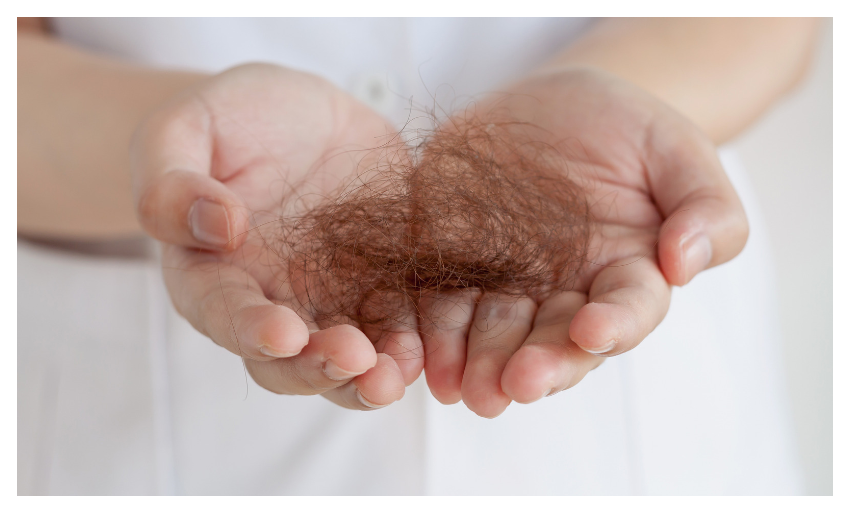
Shedding Hair in Unusual Places
Like: Losing Hair in The Shower
The Ubiquity of Hair: Your Invisible Signature
What may not be widely recognized is the fact that our hair, apart from gracing our heads, can be found in various places, often beyond our awareness. From your clothes and furniture to your food and workspace, chances are your hair has made its presence felt. Much like an invisible signature silently marking territories, it distributes itself almost imperceptibly.
In Our Clothing and Furniture
Our hair tends to get entangled in our clothing and furniture. This is due to the natural shedding process of hair, where each person loses about 50 to 100 strands a day. Any movement, whether it’s a brisk walk or even a slight toss on the bed, can detach these strands from our head, which then ends up snugly resting on the fabric of our clothes or furniture. Pets also contribute to this accumulation, as they too shed hair which gets embedded in the household environment.
In Our Food and Workspaces
Hair has a habit of ending up in our food and workspaces too, making it an unavoidable part of our daily routine. It’s not uncommon to find a hair strand in your soup or caught alarmingly between your keyboard keys. These incidents frequently occur because hair tends to stick to our hands, especially when we run them through our hair, and these strands later depart onto our food items or work desk. Also, certain environments, such as restaurants and offices, may present more opportunities for hair dispersion due to their close quarter interactions and busy movement.
Biology and Lifestyle: The Two Main Culprits
The presence of hair in various areas of our lives can be attributed to both biological and lifestyle factors. Biologically, our bodies shed hair as part of its natural cycle. However, issues like stress, hormone imbalances or certain medical conditions can increase hair fallout, intensifying its ubiquity in our surroundings.
From a lifestyle perspective, factors such as personal hygiene, grooming habits and even our professions can influence where our hair ends up. Those who frequently touch their hair, have long hair or work in environments with high human traffic are more likely to find their hair strands in sundry places.
Prevention: Is it Even Possible?
While it’s nearly impossible to completely prevent hair from accumulating in unusual places, certain steps can help curb its presence. Regular cleaning, proper grooming, maintaining a balanced diet and adopting measures of hygiene can significantly reduce hair dispersion.
When you discover a stray hair clinging to your coat, stuck in your food, or found in other unexpected areas, it’s essential to remember that this is just part of being human. Hair follows us wherever we go, be it due to excessive shedding or a simple few strands slipping from our heads.
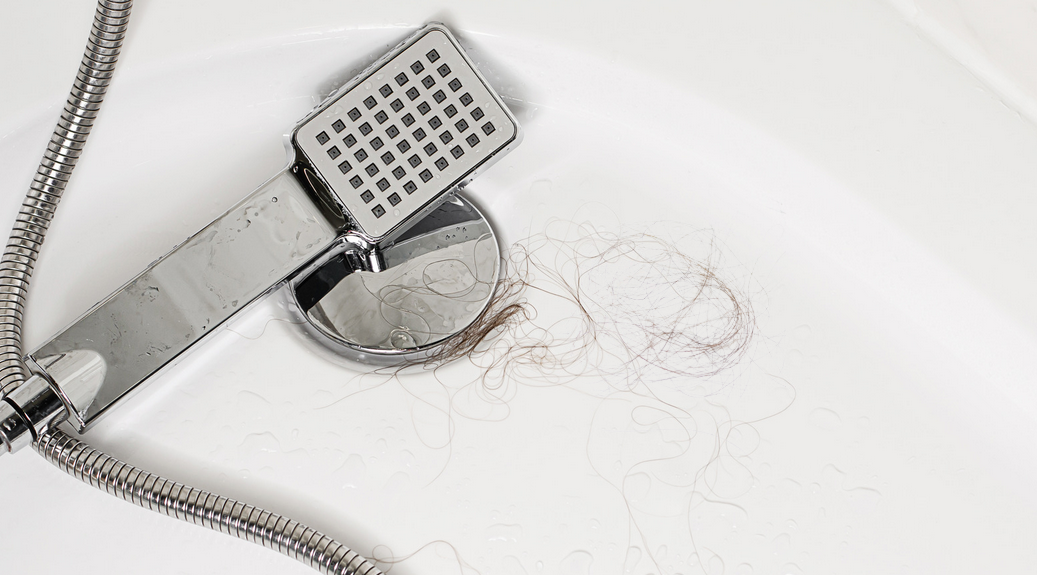
Related: Normal Amount of Hair Loss in Shower: When to Worry?
Effective Hair Management Strategies
Effective hair management strategies involve proper care and maintenance to keep your hair healthy, full, and shiny. Here are some tips from various sources:
Deciphering the Mysteries of Hair Loss and Shedding
We all experience hair loss and the shedding of hair. It’s a completely natural process, and it’s typical to lose between 50 to 100 hair strands per day due to the natural hair growth cycle. However, increased hair loss can occur due to various factors, such as stress, hormonal fluctuations, an unbalanced diet, aging, underlying health concerns, and even genetic predispositions. This increase in hair loss may lead to the familiar phrase, “your hair is everywhere.”
Strategies for Decreasing Hair Shedding
Proper nutrition is key to decreasing hair shedding. Consuming a balanced diet rich in vitamins and minerals, such as iron, vitamin D, biotin, and protein can help improve hair health and reduce shedding. Regular exercise, minimizing stress, and maintaining a healthy sleep schedule can also contribute to overall hair health.
Medications are available to treat excessive hair shedding. Over-the-counter treatments like minoxidil or prescription medications such as finasteride can be effective, but they require ongoing use to maintain results. It’s always recommended to consult with a healthcare provider before starting any new medication regime.
Cleaning Up Hair Strategically
When faced with excessive hair shedding, keeping your living and workspaces clean can be a challenge. Regularly vacuuming or sweeping the areas can significantly reduce the presence of hair. Utilizing a lint roller on upholstery and clothing is also an effective way to remove hair.
For cleaning hair from bathroom fixtures, wet wipes can be instrumental. Also, using a plunger or a drain snake can aid in clearing out hair clogs from drains.
Maintenance Strategies for a Clean Environment
Regularly changing and washing bedding can considerably reduce hair buildup, along with frequent vacuuming or sweeping. Using air purifiers can also trap hair and other airborne particles, leading to cleaner air and a reduction in hair found on surfaces around the home or office.
On a personal level, brushing your hair regularly can help control shedding by removing loose hairs. However, avoid excessive combing and tight hairstyles as they can lead to hair breakage and loss. Regular trims can also help maintain healthy hair and reduce split ends which can lead to more shedding.
Lasty, using hair care products that promote healthy hair will aid in reducing excessive shedding. These can include sulfate-free shampoos, silicone-free conditioners, and products with natural ingredients that nourish the scalp and hair.
Effectively managing hair loss and shedding is a concerted effort that needs a strategic combination of various methods. By following these methods, one can significantly reduce the impact of hair shedding, leading to a cleaner, hair-free environment.
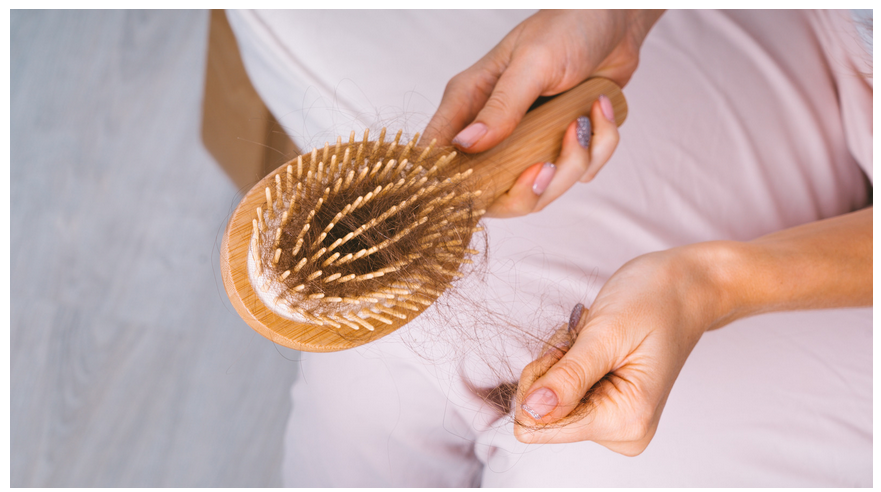
Professional Help for Hair Loss
Hair loss can be caused by a variety of factors, including genetics, medical conditions, and certain medications. If you are experiencing hair loss, it is important to see a board-certified dermatologist to determine the underlying cause and develop an effective treatment plan.
Identifying Potential Hair Loss Issues
It can be a worrying event to start noticing your hair everywhere you look; your pillow, the shower drain, your clothing, and even your hairbrush seem to contain more hair than you’re comfortable with. To be clear, losing out on a few strands of hair every day is nothing to be alarmed about – it’s estimated that most people lose between 50 to 100 strands of hair daily. However, there can be a cause for concern if you identify notable changes, such as your hair visibly thinning out, bald patches appearing, or an abnormal increase in daily hair shed.
When to Seek Professional Help for Hair Loss
If your hair loss is causing significant distress or if you notice sudden or severe hair loss, it’s time to consult a healthcare professional. Patterned hair loss or sudden hair loss could be a sign of underlying health issues like hormonal imbalances, autoimmune diseases, scalp infections, or simply aging. It’s crucial to get a diagnosis as soon as possible in order to prevent further hair loss and start appropriate treatment.
Types of Professionals to Consult
The type of healthcare professional you should consult may depend on the potential cause of your hair loss. A primary care physician can help rule out any underlying health conditions and may refer you to a dermatologist, a specialist in skin and hair issues. Trichologists, professionals who specialize in the science of hair and scalp, are also equipped to diagnose and treat hair and scalp conditions. You may also be referred to an endocrinologist if your hair loss is suspected to be due to hormonal issues.
Hair loss Treatments
Once you have determined the cause of your hair loss, the healthcare professional can suggest suitable treatment options. This may vary significantly depending on the type of hair loss. Medications such as minoxidil (Rogaine) and finasteride (Propecia) are common treatments for male and female pattern hair loss. These medications can slow hair loss and even help regrow lost hair. Alternatives can include nutritional supplements, laser therapy, platelet-rich plasma injections, or, in more severe cases, hair transplants.
Psychological Impact of Hair Loss and Role of Mental Health Professionals
Hair loss can potentially impact your self-esteem and mental wellbeing. If hair loss is causing depression, anxiety, or other psychological issues, you might benefit from seeking help from a mental health professional. Therapists and counselors can provide techniques to cope with these feelings and can guide on improving body image and self-esteem.
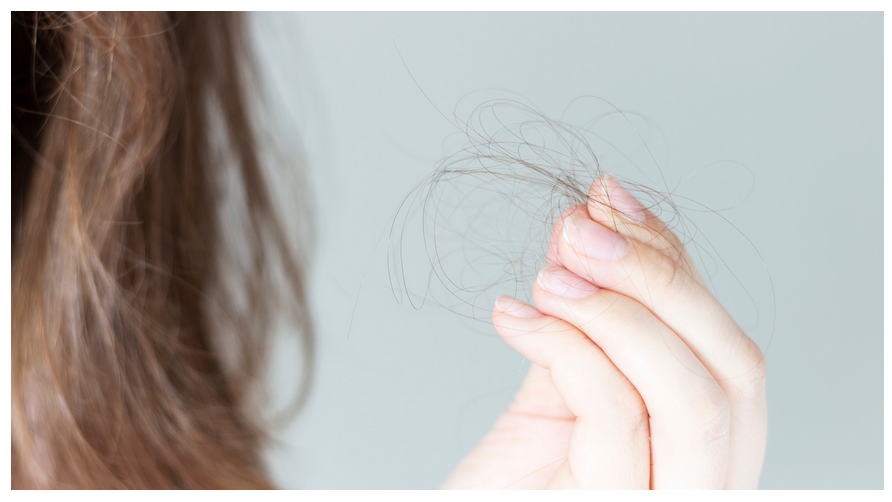
Queries around hair shedding, hair loss, or even as elementary as getting rid of unwanted hair are not always answered with conviction. But there is always professional help available that can guide you through these issues if they become severe enough to affect quality of life. Professional advice, ranging from medical treatments to lifestyle changes, can help manage these matters effectively. Moreover, there’s a community of professionals from dermatologists, trichologists, to hair stylist who have devoted their careers to help communities maintain healthy hair and address issues of hair loss or excessive shedding. A deeper understanding of hair behaviour, innovative strategies for hair management and the right professional help can indeed lead to better hair health and overall well-being.
- AI Powered Bald Filter Online 2024: See Yourself with No Hair! - January 19, 2024
- Harklinikken Bad Reviews 2024: Analyzing Negative Feedbacks - January 18, 2024
- How to Get the Alex Eubank Hair | Step-By-Step Tutorial 2024 - January 18, 2024

